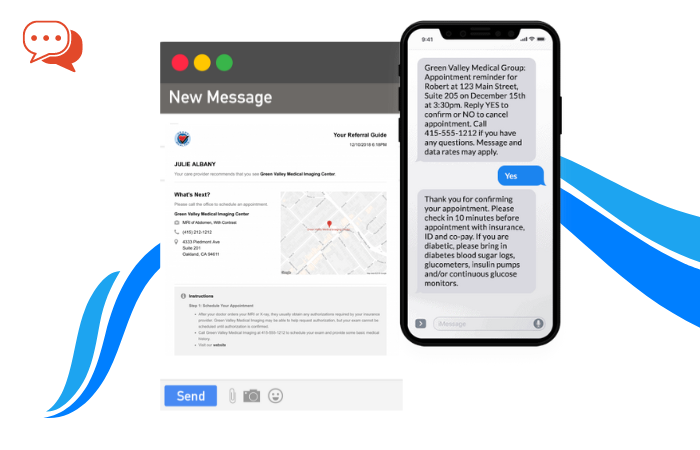Jordan Lento, Senior Project Manager at Wellcentive breaks down the relationship between population health and HIEs.
Electronic Health Record (EHR) technology has been a huge contributor to the increased collection of data in a consistent and quality manner. Unfortunately, EHRs effectively silo their data within the walls of individual practices and health systems – which is a major barrier to communication, care coordination and collaboration, and efficient health care delivery.
HIEs were created to address this barrier by allowing HIT systems and healthcare providers to exchange information in order to deliver high-quality, cost-effective care.
Today, healthcare continues to move toward performance- and risk-based reimbursement models and more coordinated care. This has in part caused a paradigm shift from a focus on simply getting data into an EHR to a focus on HIT systems and providers proactively sharing data.
Health Information Exchange (HIE) is the electronic mobilization of clinical and administrative data across organizations, communities, states and beyond in an effort to provide more relevant, responsible, and cost-effective care for entire populations while simultaneously improving outcomes.
The key stakeholders who benefit from the effective exchange of health care data include physicians, physician organizations (PHOs and IPAs), accountable care organizations (ACOs), healthcare delivery systems (IDNs), health plans, and patients.
All Health Information Exchange is Local
How HIE is accomplished is affected by numerous variables, including community type (urban vs. rural), geographic regions, number of hospitals, community interest, HIE infrastructure maturity, etc. Two types of HIEs exist today: public and private.
Public HIEs: Commonly referred to as “community” HIEs. Typically managed, open to, and supported by the communities with which they serve.
Private HIEs: Primarily governed by a single healthcare system or integrated delivery network (IDN).
While their function is essentially the same, the differences are where they “reside” within the community and what type of patient and provider population the HIE serves. Right now, research shows that providers are typically split between public versus private HIEs but lean toward the private option because it offers more control of data and a more financially sustainable model.
A common misconception is that funding solely determines whether an HIE is termed public or private; however, the cost of establishing an effective HIE has caused a reliance upon State, Federal or independent grant funding for both public and private HIEs.
Related: All HIEs Are Not Created Equal
Leveraging The Data That Is Exchanged
HIEs often exchange a variety of clinical and administrative data types. Most commonly, the exchange is from health systems to EHRs in the community for results delivery and use at the point of care. Some of this data is narrative, such as hospital discharge summaries, and some of this data is actionable, such as lab results.
In order to allow the recipient to actually use the data received from an HIE, the data needs to be normalized to a common format and mapping. Creating interoperability between systems is crucial for achieving true information exchange across systems and communities.
There have been few self-sustaining HIEs in today’s environment, where legislation is still unclear and the financial benefits of better healthcare data exchange are often difficult to realize. Often, the organizations that are asked to help support a HIE (health systems and providers) are not the same organizations who benefit from the improved clinical and financial performance that data exchange can enable (payers and employers).
However, with the increased emphasis on performance-based and risk-based reimbursement models, the value of this data for improving clinical and financial outcomes has increased dramatically.
Related: The Do’s and Don’ts of Successful Data Management for Population Health Management
With the right technology, the HIE data streams can be tapped for use with PHM programs. HIE and PHM are complementary and parallel technology tracks. HIEs make more comprehensive data available across communities, and PHM solutions aggregate, normalize, analyze, and report on actionable data from disparate sources. When these two types of systems are connected and working together, they bring value at the point of care as well as at the enterprise reporting level.
As performance-based and risk-based reimbursement programs grow in number and economic importance, the value of having an accurate, up-to-date, and complete data set to drive your PHM program will increasingly provide a sustainable business model for both HIE and PHM programs, especially when they are working together in a community.
So, what is Population Health Management?
PHM is a relatively new innovation within healthcare. It is the overarching system of care that encompasses HIE and transforms actionable data into meaningful insights for patient care. The information is used for preventive care, evidence-based disease management, population health management, physician alignment, clinical integration, and participation in various reimbursement programs.
PHM is the lynchpin for truly improving clinical outcomes for individual patients, patient populations, and entire communities.
Related: 6 Pillars of Responsible Health Management
In many communities with successful PHM programs, clinical and administrative information from HIEs readily flows into the PHM solution, which gives health care providers a more complete picture of the health of individual patients as well as the health of entire patient populations.
Tools for comprehensive population health management include point of care decision support, care gap analysis, automated patient outreach, roll-up and drill-down outcomes reporting, predictive modeling and risk assessment, and care management and coordination. Sharing data allows PHM programs to grow beyond the boundaries of a community, state or region.
HIE, PHM, and a Happy Town Near You
The graphic below, which we lovingly refer to as “Happy Town,” depicts the typical relationship between HIE and PHM clearly and simply. You can see the harmonious relationships between the provider/organization types, individual information silos, various communication pathways within the healthcare delivery system, and how PHM encompasses those elements.
A physician-facing, user-friendly PHM platform will aggregate and normalize clinical and administrative data, thus empowering organizations to improve clinical and financial outcomes.
No doom. No gloom!

Jordan Lento is a Senior Project Manager at Wellcentive where this article was first posted.
Image credit: Wellcentive










